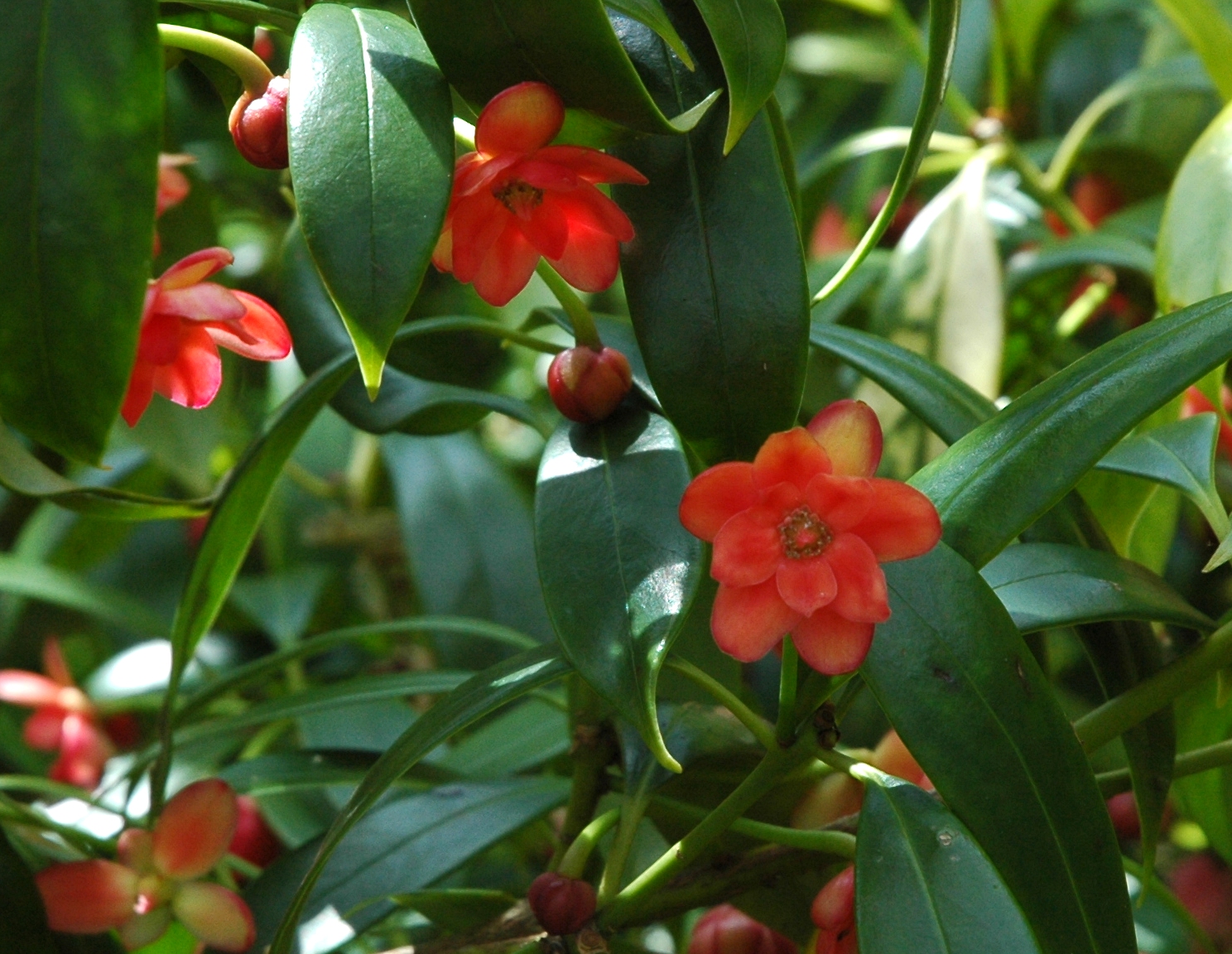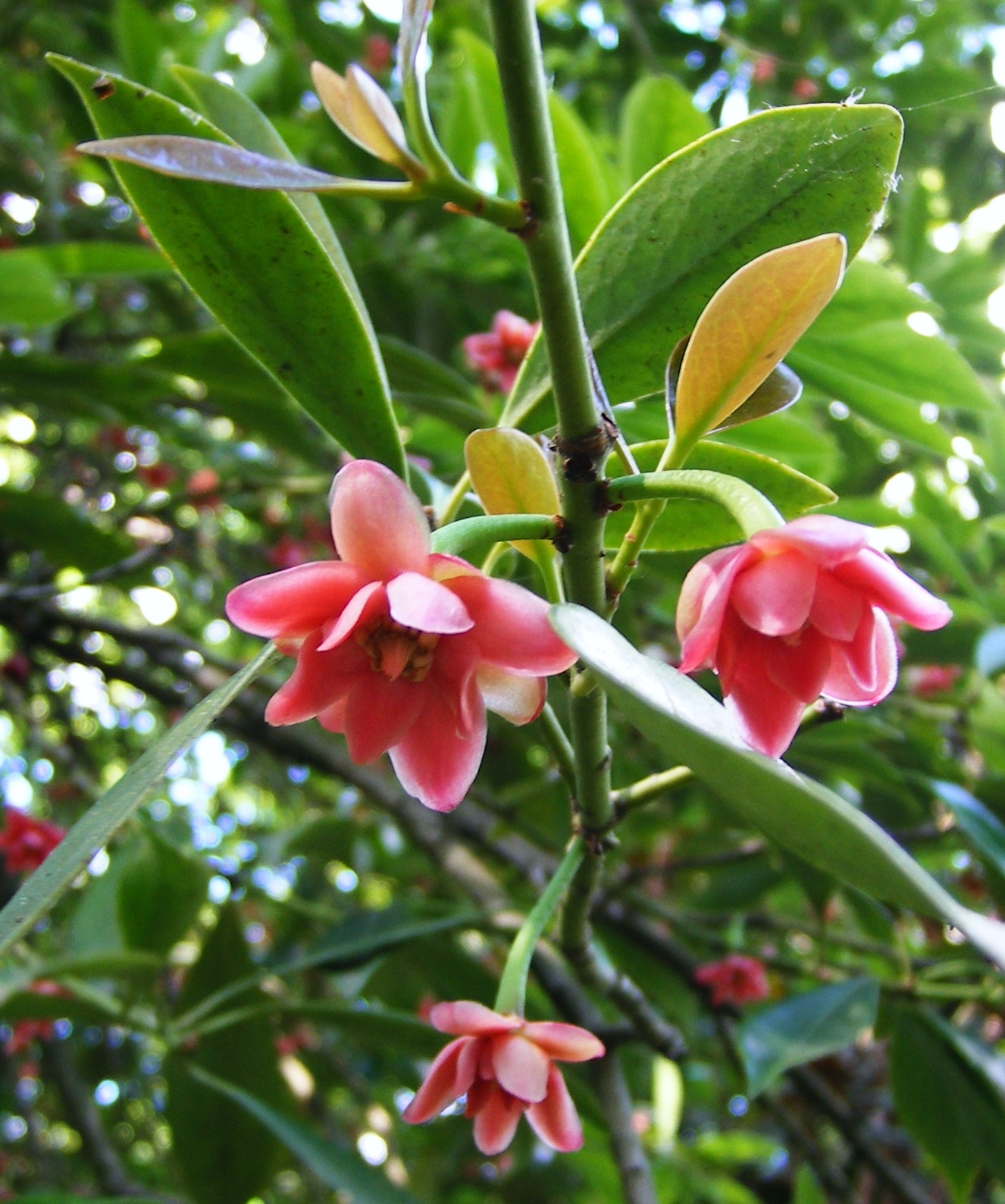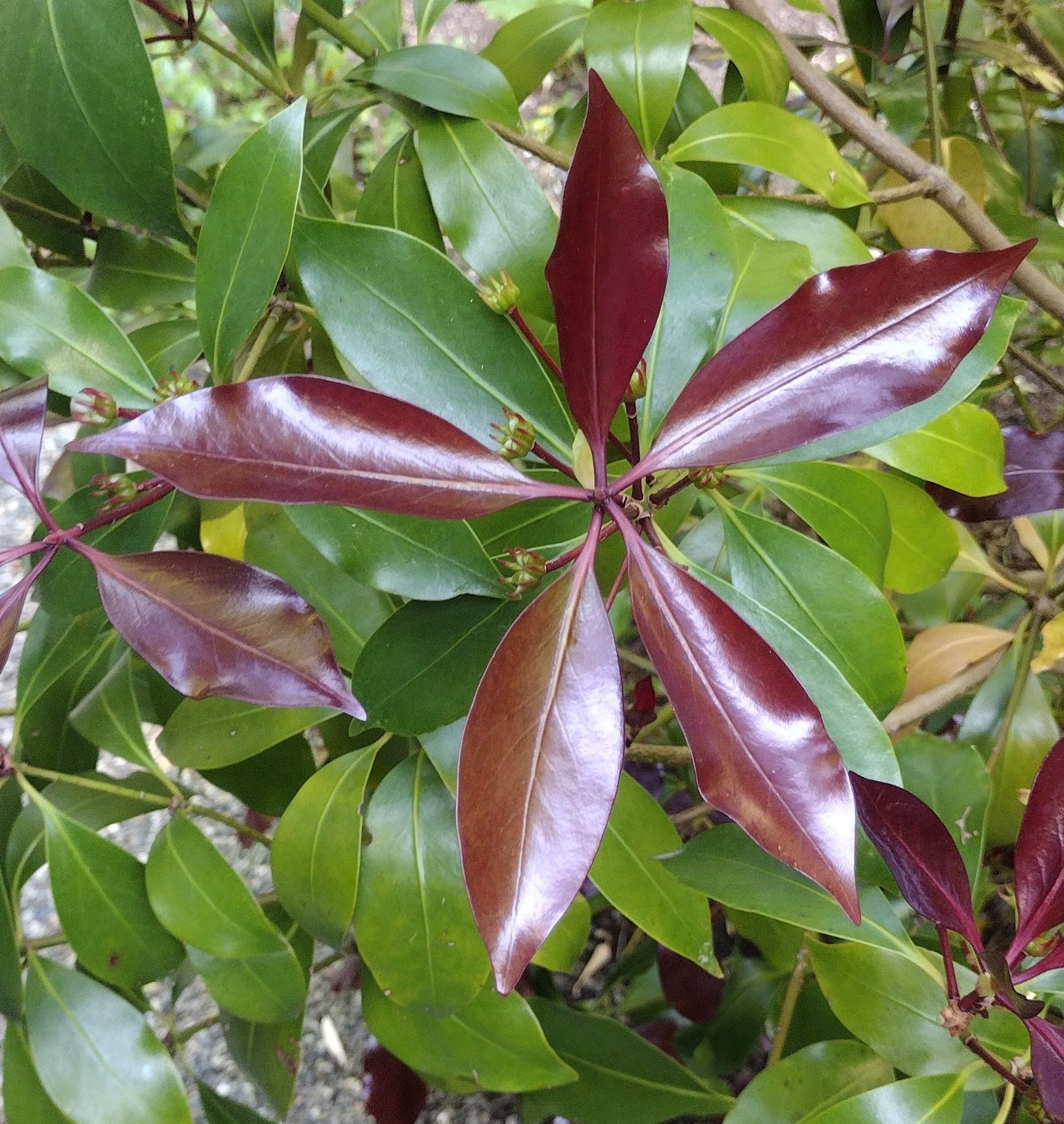Illicium anisatum
Credits
Article from Bean's Trees and Shrubs Hardy in the British Isles
Recommended citation
'Illicium anisatum' from the website Trees and Shrubs Online (treesandshrubsonline.
Genus
Synonyms
- I. religiosum Sieb. & Zucc.
Infraspecifics
A shrub or small tree, the young branches of which are glabrous, green spotted with brown. Leaves 2 to 4 in. long, 3⁄4 to 1 in. wide, narrowly oval, blunt at the apex, tapering at the base to a short thick stalk. Flowers borne from March to May, about 1 in. across, shortly stalked, clustered in the leaf-axils, not fragrant. Petals narrow, numerous (up to thirty), pale greenish yellow. Bot. Mag., t. 3965.
Native of China and Japan; introduced in 1790. South of London it is moderately hardy in a sheltered position, growing slowly but steadily to a height of about 6 ft in the open, and flowering freely. In the milder parts it will attain twice that height or even more; at Trewidden in Cornwall it is 20 ft high.
The leaves and wood have a strong and agreeable fragrance. This shrub was long thought to be the ‘star anise’ of the Japanese and Chinese, but that tree is really quite a different species – I. verum Hook. f.
I. henryi Diels – A small tree in the wild. Leaves oblanceolate, 4 to 6 in. long, 1 to 2 in. wide, acuminate at the apex, tapered at the base to a stalk 1⁄2 to 3⁄4 in. long, fairly glossy above, leathery. Flowers fragrant, varying in colour on wild plants from pink to deep crimson (pink in the cultivated plants), solitary in the leaf-axils on stalks 1 to 11⁄2 in. long. Petals ovate or oblong-ovate, about twenty in number. Carpels eight to thirteen. A native of W. China, discovered by Augustine Henry; it was later collected by Wilson, but the origin of the plants now in cultivation is uncertain. It is hardy in woodland south of London, but slow-growing.





